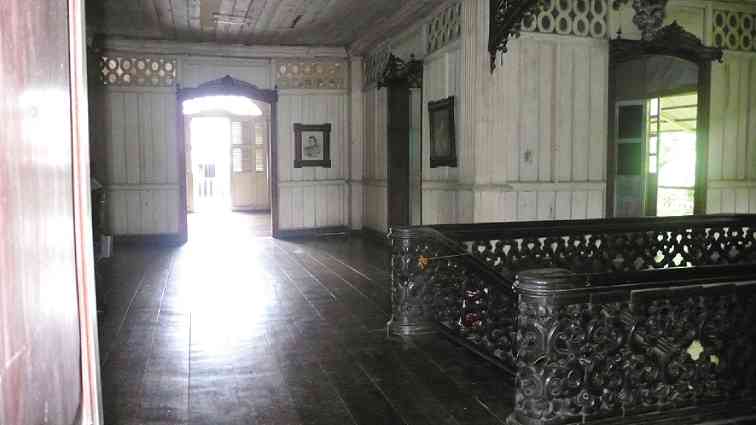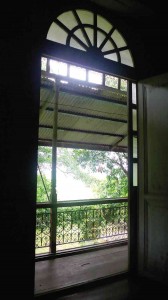

CASA GRANDE (Big House) is what it’s called by the Claparols family, fourth-generation descendants of Don Aniceto Lacson and owners of the magnificent heritage home.
At the time Casa Grande was built in 1880, Lacson was among the biggest and wealthiest sugar planters in Negros.
A member of the Katipunan, Lacson was a nationalist who successfully led a province-wide revolt against the Spanish which started on Nov. 5, 1898, and ended the following day with Spanish surrender.
Lacson was installed as the president of the short-lived Cantonal Republic of Negros, ceased after surrendering to the American regime in March 1899.
A yearly, province-wide celebration in Negros, called Cinco de Noviembre, honors the Republic of Negros and Lacson.
Grande is massive in every sense—from its baronial size, architectural significance and historical importance to the Filipino nation.
First thing that stands out is its size. The house is huge. Its scale is majestic, a reflection of the stature of Lacson in Negros.
The height of each of its two floors is almost double that of a normal floor, so despite its deceiving appearance as a two-story house, its true height approaches four stories.
Floral style
Architecturally, the Lacson house is one of the most outstanding among the small group of elite heritage houses in the Philippines, and it is the only one of its type anywhere in the country.
Built in the late 19th-century floral style as defined by author Fernando Zialcita, the ground floor is constructed of bricks and of coral stone, common construction material in the Visayas.
The upper floor is entirely of wood—tindalo, balayong and molave, which were the best Philippine hardwoods available at the time.
Exquisite architectural details carved by Chinese craftsmen embellish the interior of the house. Carved details are especially evident in the second-floor family quarters, where ornamental carved fretwork defines interior spaces which flow into each other instead of being completely sealed off from one another as in Western architecture.
Air flows freely as well. Large doors open out from all rooms to the verandah surrounding the second floor, allowing maximum light and air to circulate in the interior space, while carved vents on the upper portion of wood interior walls add to the air flow cooling down the area.
Occupying an entire wing of the ground floor is a private chapel where regular services attended by family and farm workers are still held today, as it probably has been for the past five generations that the hacienda has been in operation.
Hacienda house
Casa Grande is the perfect hacienda house. It belongs to its location, fitting perfectly with the surrounding landscape.
Standing on a low-rise with a dominating view of the family hacienda, the house is built tall. A balcony encircles the entire second level. Adding more height is a lookout tower rising above the roofline.
The house is a strong presence that establishes the owner’s authority over the surrounding landscape. Its strong presence silently tells the history of the house, visually illustrating the wealth and power of the Lacson family that emanate from their vast landholdings.
It’s also a reminder of the forgotten story of revolutionary fervor, how the founding father of the Lacson family courageously rose against Spanish rule to found and be the president of the Cantonal Republic of Negros.
Spirit of place
This is a house with evident “spirit of place,” an attribute that combines its obvious architectural heritage (tangible heritage) with the story of the house (intangible heritage). Both aspects are inseparable qualities.
A strong typhoon blew off the roof of the house in the mid-1980s, causing the family that lived in the house to transfer to another location. The house has been empty ever since.
Today the house tells the story of how it suffers the fate of many old houses, of badly needing conservation to see it through its next century, and of the slow, expensive process that conservation takes.
Its size, a statement of yesterday’s prestige and wealth, is more of a liability these days. It means that the extent of conservation work is huge, requiring far more than what more modestly sized heritage homes require.
The best construction materials available over a century ago are now difficult to find and are prohibitively expensive, if at all available. Cutting of most Philippine hardwood species and mining of coral stones needed to produce lime used for mortar work in the 19th century are banned for environmental reasons.
Modern construction materials such as cement and steel are, more often than not, incompatible with the old materials the house is constructed with.
Combining cement with antique, lime-plastered walls deteriorates, rather than repairs, walls. Replacing wooden columns and beams with steel adds unnecessary stress that weakens rather than strengthens the old structure.
Usually, original wood from the old structure is recycled whenever possible. Nothing is thrown away, much less the original material used to construct the house. Compatible material substitutes are used as sparingly as possible.
Restoration effort
Most members of the present-generation Lacson-Claparols family have joined forces to establish the General Aniceto Lacson Ancestral Home Foundation (Galah), whose main function is to restore their ancestral home.
The restoration effort is timely. Due to termite infestation, the structure is sagging badly, causing floors to crack and walls to deform, structurally endangering the main stairs.
Main ground-floor wooden posts that support the floor above were strengthened with external scaffolding to prevent further sagging, a preventive move that checked, but not completely eliminated, more damage to the structure.
The damage to the house, if allowed to continue at its present rate, will further endanger the structure and render it inhabitable in a few years. Time is running out.
Galah realizes this and has taken the first step in restoring the house, accepting that the process will be long and expensive.
One day grandeur will return to Casa Grande. Galah hopes it will return sooner than later.
E-mail the author at pride.place@gmail.com.

